- Home
- TV History
- Network Studios History
- Cameras
- Archives
- Viewseum
- About / Comments
Skip to content
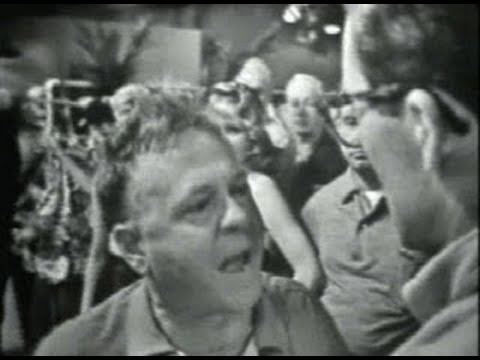

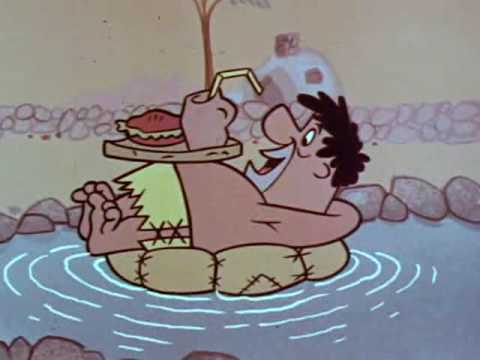

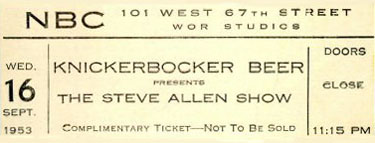

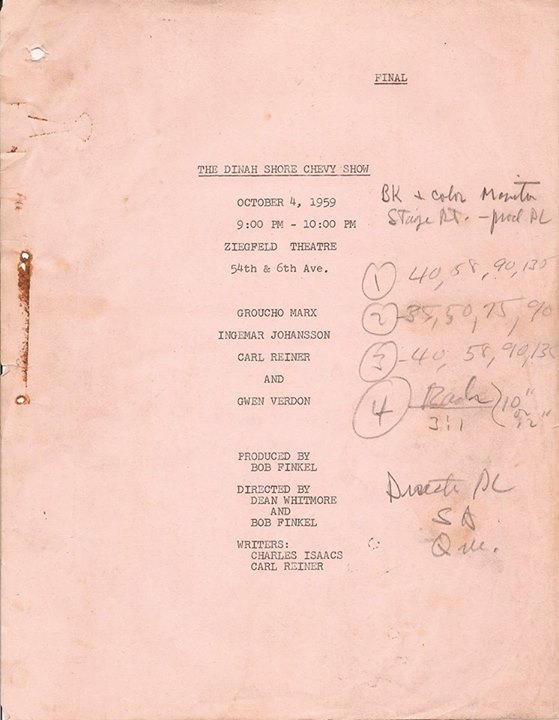

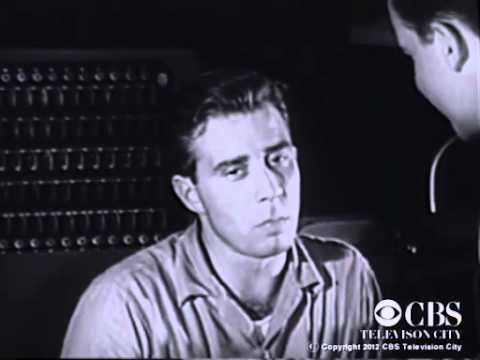

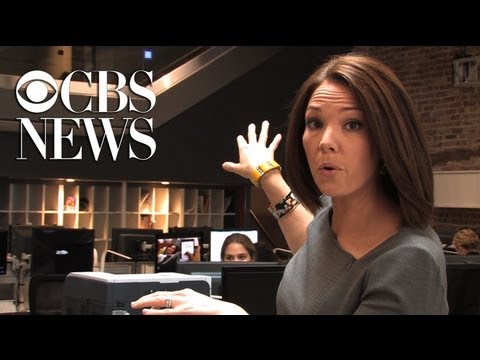

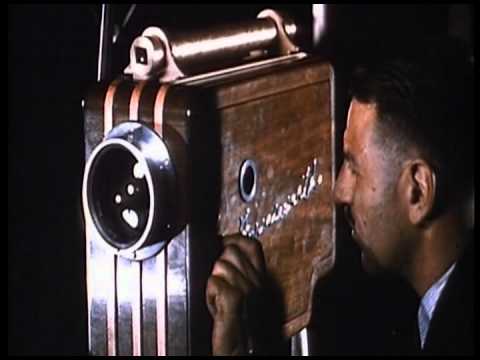

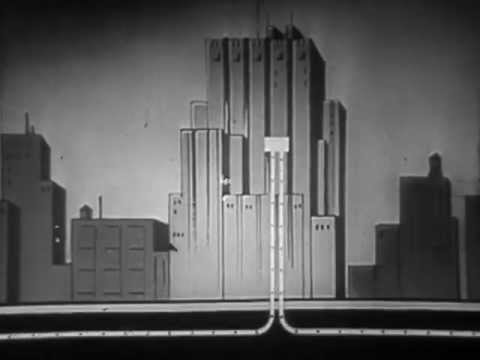

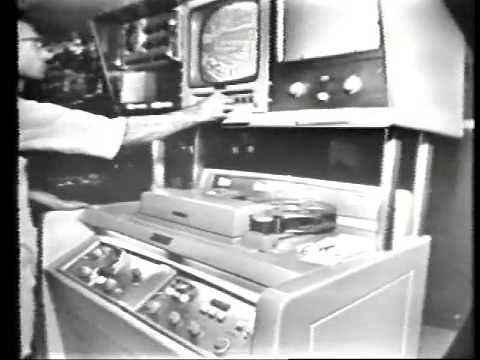

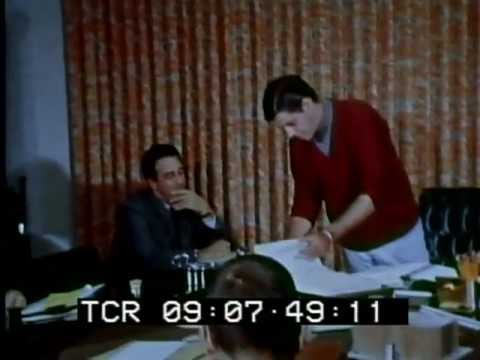

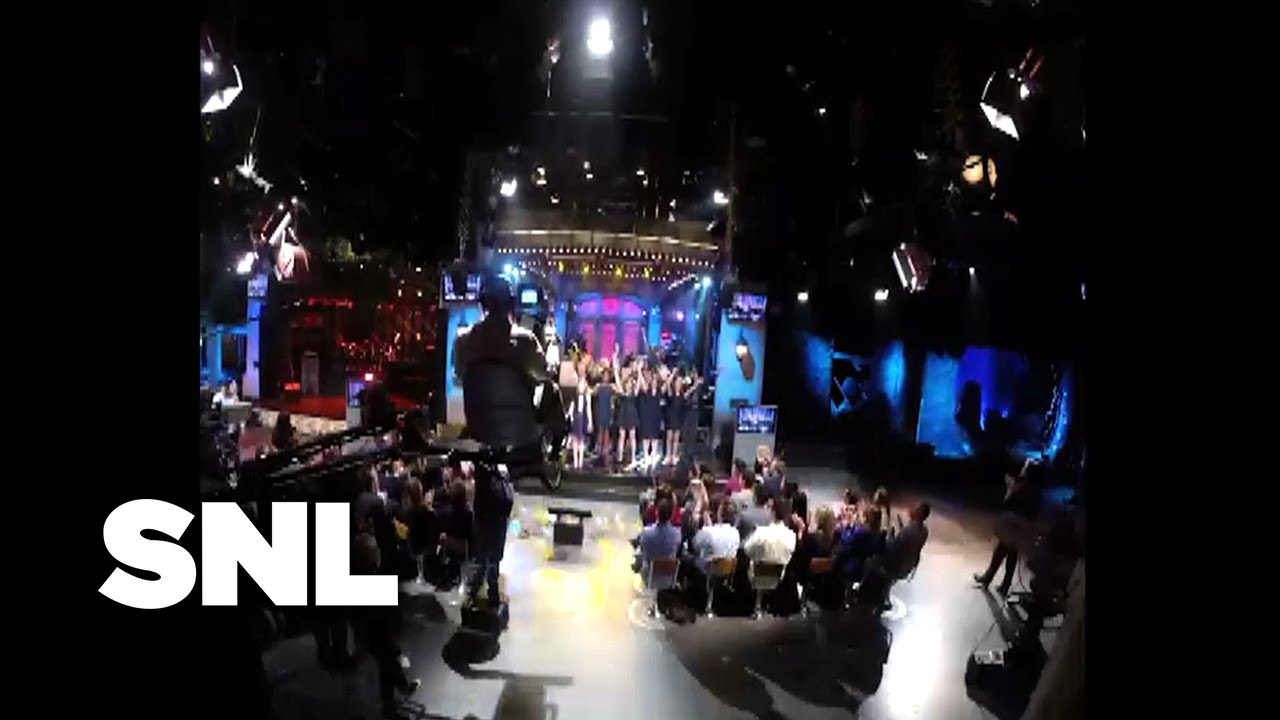

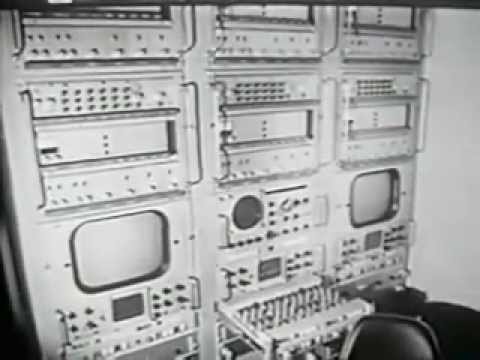

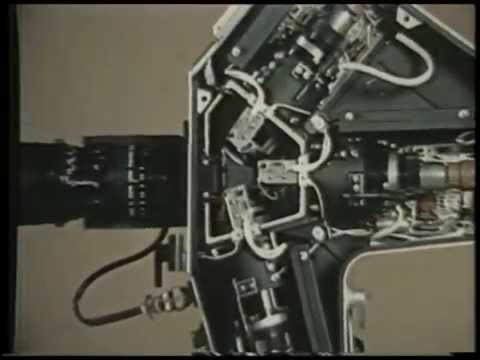

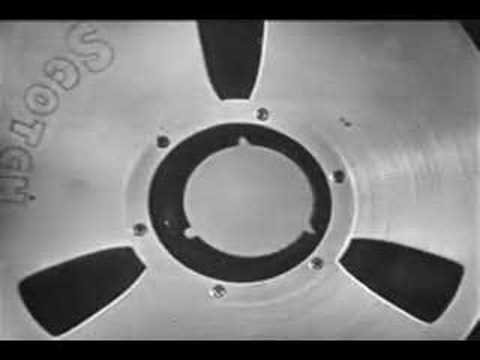

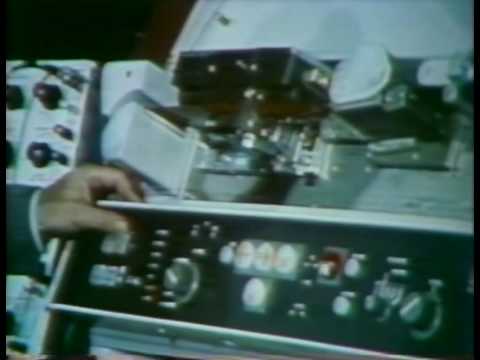

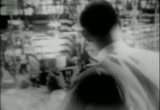

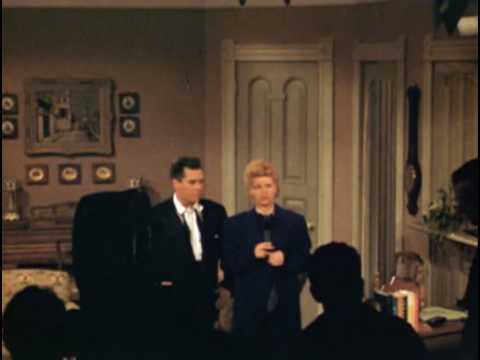

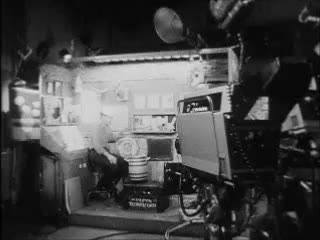

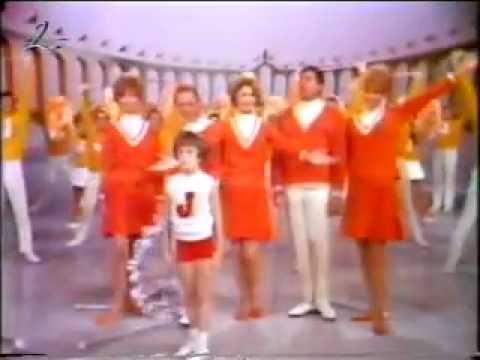



Posts in Category: Viewseum


October 4, 1956…’Playhouse 90′ Debuts on CBS
On October 4, 2014
- TV History, Viewseum
October 4, 1956…’Playhouse 90′ Debuts on CBS
Thursday nights at 9:30 eastern, television’s most distinguished dramatic anthology series was anxiously awaited in most American living rooms. Below is a full episode of the show that you will want to see...it’s full of RCA TK11s and many Television City studio shots all the way through. This is “The Comedian” starring Mickey Rooney and Mel Torme. It was written by Rod Serling and directed by the great John Frankenheimer and live ran on February 14, 1957. This is a kinescope copy of Season 1’s, Episode 20.
From it’s inception in 1956, everyone knew that this 90 minute weekly presentation was a big bite for any production schedule…even the new CBS Television City facility. So, that first year, three out of four episodes were done live with every fourth episode being done on film at another location.
Remember, the worldwide debut of video tape was in April of 1956 and it took nearly a year to get some machines built and in use, but soon after CBS TVC got theirs, they began to experiment with using them on ‘Playhouse 90’. Although the were live to tape, with no editing, having this ability helped a lot, and in early ’57, the show moved completely to videotape.
The move to tape allowed the show to keep it’s live look and best of all, it allowed them to break the 90 minute show into segments and gave them the ability to retake scenes and move sets without the urgency of the live clock against them.
In the final ’59 – ’60 season, the pressures and cost of this truly ambitious effort proved overwhelming and ‘Playhouse 90’ cut back to alternate weeks and rotated with ‘The Big Party’, which was a 90 minute celebrity talk and variety show. Enjoy and Share! -Bobby Ellerbee


September 30, 1960…’The Flintstones’ Debuts On ABC
On September 30, 2014
- TV History, Viewseum
September 30, 1960…’The Flintstones’ Debuts On ABC
This short clip is what was used to sell the ‘The Flagstones’ to ABC and it’s sponsors. Before it came to air, the name had to be changed for legal reasons as Flagstone was a trademarked name.
This pilot was essentially a demo reel of what the show would look like. Note the grease pencil marks on the film, that depicts scenes from the pilot that would later be used in “The Swimming Pool” episode. It was shown to potential sponsors in the spring of 1960 with Miles Laboratories and R.J. Reynolds buying in as sponsors on the strength of this presentation. Daws Butler did both Fred and Barney’s voices; Jean Vander Pyl was Wilma and she continued as in that part in the series and June Foray was the voice of Betty.
In the series, Alan Reed was the voice of Fred, Mel Blanc was the voice of Barney, Jean Vander Pyl was Wilma and Bea Benaderet was Betty. The show was broadcast from September 30, 1960 till April 1, 1966. Although done in color, it did not air in color on ABC till 1962, after ‘The Jetsons’ debuted in color.


‘Tonight’…Son Of ‘The Knickerbocker Beer Show’
On September 27, 2014
- TV History, Viewseum
‘Tonight’…Son Of ‘The Knickerbocker Beer Show’
When ‘Broadway Open House’ left the air in August of ’51, late night television got put on the back burner as NBC’s Pat Weaver was busy putting together ‘The Today Show’, which debuted in January of 1952. After a year or so of intense focus on the early mornings, Pat began to think about late nights again.
Ted Cott, a successful radio executive who had recently moved into television at the NBC affiliate, suggested Steve Allen as host for the venture. and was interested in a west coaster that had recently shown up for some extended club dates and radio work in NYC. This was of course Steve Allen, and Weaver tested the water by giving Allen a half hour of late night air time on NBC’s local station, WNBT near the end of 1953.
At that time, WNBT and its late night movie program was getting clobbered by a better package of films being broadcast every night on the CBS affiliate, WCBS.
Knickerbocker Beer, which was then a major brand, decided it wanted to sponsor something other than late movies on WNBT…say, a variety show. Ted Cott, a successful radio executive who had recently moved into television at the NBC affiliate, suggested Steve Allen as host for the venture.
At the end of August of 1953, a 40 minute weeknight program called ‘The Knickerbocker Beer Show’ debuted. Steve Allen was the host and the legendary Dwight Hemion was directing one of his first shows which originated from Studio A of the WOR 67th Street Studios. At the time, the studio was still owned by WOR and NBC was leasing space, but that changed the next year when the ‘Home’ show with Arline Francis came to the air…NBC took over the whole complex then.
A few weeks after the debut, the show’s name was changed to ‘The Steve Allen Show’ but Knickerbocker was still the sponsor. In the comment section, I’ll show you ticket from the September 16th show.
Done at first without writers and always without much of a budget, Allen’s local show was an immediate success, garnering both critical acclaim and the desired higher ratings. On the show, Allen would play the piano, chat with audience members or guests, bring on Steve Lawrence and/or Eydie Gorme to sing a song (as in this clip) and have fun with the bandleader Bobby Byrne. Allen was basically laying the foundation for all TV talk shows to come. Less than a year later, most of the operation would be moving over to do a network show called ‘Tonight’ which debuted September 27, 1954! Below is a clip from that first night. Enjoy and Share! -Bobby Ellerbee
UNBELIEVABLY RARE! The SHOW, The SCRIPT & SCHEDULE!
On September 19, 2014
- TV History, Viewseum
UNBELIEVABLY RARE! The SHOW, The SCRIPT & SCHEDULE!
On Sunday night at 9PM, October 4, 1959, ‘The Dinah Shore Chevy Show’ aired in color on NBC from The Zeigfeld Theater. Here is the whole show!
Below are a few pages of the script and the rehearsal sheets from this same show! Thanks to our friend Gady Reinhold at CBS, we are able to see these historic artifacts and with his notes, understand the meaning of some of the technical terms of the day. As you click on each image, you will see his descriptions of what is on each page. You will only see this here so please share this rarity! -Bobby Ellerbee


A Tour Of CBS Television City With Edward R. Murrow
On September 14, 2014
- TV History, Viewseum
A Tour Of CBS Television City With Edward R. Murrow
This is a November 1953 broadcast of ‘See It Now’. In the first part of this half hour show, we’ll see the extensive and state of the art lighting in Studio 31, Art Linkletter’s show in Studio 41 and Jack Benny rehearsing upstairs in the space where James Cordon’s “Late, Late Show” is now done. We’ll also see “My Friend Irma” (one of the first network shows to originate at TVC) in production in Studio 43.
In the second half, we continue with Jack Benny rehearsals, but quickly move to the huge scenery and paint shop. We’ll visit camera maintenance and get up close and personal with a new RCA TK11. After that, we go to Telecine, see a fabulous custom patch panel and we’ll get to spend about five minutes on the set of “My Favorite Husband” for camera rehearsals in Studio 33. Enjoy and share! -Bobby Ellerbee


Behind The Scenes…The CBS News Studios, 2014
On September 8, 2014
- TV History, Viewseum
Behind The Scenes…The CBS News Studios
This is a great clip that takes us inside both the CBS Morning and CBS Evening news studios. The big production studios, 41- 45, are in another part of the building, but the news studios 47 and 57 are close to the front entrance and lobby. I was here in May.
CBS has done a great job on the setup for not only the studios, but the actual newsroom and office spaces. I think this was all done about six years ago. By the way, thanks to our host, Erica Hill, for pointing out that the original Cronkite newsroom map is in the CBS Morning News studio and the replica is on the Evening news set. It was too big to go in the Pelly set in Studio 47. Enjoy and share! -Bobby Ellerbee


A Rare Look (In Color) At Early Electronic Television…
On September 7, 2014
- TV History, Viewseum
A Rare Look (In Color) At Early Electronic Television…
This is quite an interesting look at Philo Farnsworth’s television studio and station in operation. From the technical to the theatrical side, including the wild makeup, we’ve got 10 minutes of great color film to show us how this all came together.
Farnsworth and RCA, under Vladimir Zworykin, were basically neck and neck in development and I think Philo was actually ahead of RCA, but they had the money and he didn’t. There is a famous story of Zworykin visiting Farnsworth on Green Street in San Francisco…during the visit, Philo demonstrated a new Image Dissector tube and as he did, it was reported that a big light went off in Zworykin’s head. Seeing what Farnsworth had done gave him the answer to a huge problem he had with his Iconoscope tube. As soon as he got back to RCA, Zworykin fixed his problem.
Farnsworth had talked with Zworykin as one inventor to another but Zworykin was hearing trade secrets from a competitor. RCA screwed him royally, and although he did finally get some money from the patents RCA had used, it was nothing close to what RCA was making. So, if Philo didn’t get the respect from RCA that he deserved, we can at least give him ours. Enjoy and share! -Bobby Ellerbee


How Television Goes From Coast To Coast…The 1949 Version
On September 5, 2014
- TV History, Viewseum
How Television Goes From Coast To Coast…The 1949 Version
Before I get too far along, I wanted to mention that at the start of this, and again, scattered throughout, we get a rare look inside at what I think is NBC Studio 8G in action. This would have been shot not long after 8G was dedicated on April 22, 1948.
In today’s post just before this one, we celebrated America’s first coast to coast television broadcast of September 4, 1951. When this AT&T film was made in 1949, the network lines only went as far west as Chicago but in early 1950 went to St. Louis.
This is full of very interesting information on the coaxial cables and systems of the day and at around the 6 minute mark, we get into how AT&T handled the microwave part of broadcasting.
Many of today’s younger generation of broadcasters do not know that back in the early days, Ma Bell was in charge of long distance transmissions for both radio and television. They were as much a part of engineering and remote crews as the camera and audio men, because without the hookup, there was no show. Enjoy and share!
– Bobby Ellerbee


Memories Are Made Of This! 1959 Tour Of KOA TV, Denver
On September 3, 2014
- TV History, Viewseum
Memories Are Made Of This! 1959 Tour Of KOA TV, Denver
This will start as we are lead into the telecine room, complete with a telop machine…something many have never seen before. Soon we are in video control and at next up, we see two brand new Ampex VR 1000 video tape recorders. After that, we see some film editing and a UPI photo fax machine and then, we are in KOA Radio.
At 8:29 we get down to business in the television studios, equipped with the latest transistorized lighting board, rear screen projection and new RCA TK11/31 cameras. Thanks to John Schipp for reminding us of this clip…arguably one of the best local station tours ever. Enjoy and share! – Bobby Ellerbee


The Birth Of Video Assisted Movie Making…Jerry’s Noisy Toy
On August 27, 2014
- TV History, Viewseum
The Birth Of Video Assisted Movie Making…Jerry’s Noisy Toy
This video clip is cued to start at our first look at Jerry Lewis with his custom built video assist equipment…a long rack called Jerry’s Noisy Toy.
This is from a 4 minute film featurette for 1966 movie audiences, but Lewis had been using this, or a similar configuration of these elements, since around 1960. As a director, producer and talent, he needed a way to be in three places at once and this was his solution.
With a small RCA camera mounted on the movie camera (seen in first minute of the video), he could see how a shot was framed in the monitor. With video and audio tape, he could instantly play back scenes and not have to wait for the film to be developed to see if he got his shots.
Lewis was the first director-actor to make use of a “closed circuit television preview system” (now commonly referred to as video assist) with his 1960 film “The Bellboy.”


The Most Awesome “Ballet” In All Of Television! SLN Timelapse
Here’s a fantastic 2 minute time lapse look at ‘Saturday Night Live’. This was shot a on April 5 of this year and features Pharrell Williams singing “Happy” and Anna Kendrick as the host. Remember that?
I was there a month later on May 3rd. My seat was on the floor, front row left as you look at this. I can’t even begin to tell you what a joy it was to watch these pros at work! Honest to God, it’s a ballet!
5 pedestal cameras, the Chapman Electra crane and two sound booms all have to move in unison from one end of 8H to the other as the sketches move from stage to stage. All the while, there are 30 or so stagehands striking and setting up scenery all around you. Plus, there are cast members, PAs, Q card and utility men and floor directors in constant motion!
To the crew, the cast and everyone associated with ‘SNL’ I only have 4 words…YOU ROCK! THANK YOU! – Bobby Ellerbee


The First CBS Color Trucks…Circa 1966
On July 16, 2014
- TV History, Viewseum
The First CBS Color Trucks…Circa 1966
I’m not sure if our friend Dave Minott was involved in building this first CBS Labs Color truck, but he was there for all the rest. The cameras (with no cables attached) are newly delivered Norelco PC60s. This is quite interesting and I hope those of you that worked on these trucks will chime in with your stories. Enjoy and share!


Introducing The RCA TKP 45 & TK 76 Prototypes
On July 11, 2014
- TV History, Viewseum
Ultra Rare! Introducing The RCA TKP 45 & TK 76 Prototype…
The RCA TKP 45 was the first portable color camera without a backpack and debuted in 1974, two years before the TK 76 color ENG camera. At the 6:19 mark, you’ll see the TK 76 prototype that fortunately didn’t look anything at all like the final version.
This RCA sales tape includes footage from the field testing, some of which was at The Rose Parade. This was probably the first ever EFP or Electronic Field Production camera as it was mostly built for that and not Electronic News Gathering (ENG), but would work in either application. Our friend Lou Bazin was the principal RCA engineer on this, and many other RCA camera projects including the TK44, 45, 46 and 47. Enjoy and share!


State Of The Art Television: 1961 & The Ampex Editec System
On July 3, 2014
- TV History, Viewseum
State Of The Art Television: 1961 & The Ampex Editec System
This great 1961 demo tape from KTTV in Los Angeles gives us one of the most thorough run throughs of video switching effects and video capabilities of that era available. Keep in mind though, videotape was still a cut and splice process till 1963 when Ampex introduced the Editec system which came after this video was created, but here’s the way it worked…
Editec was the first form of electronic video editing, allowing broadcast television editors frame-by-frame recording control, simplifying tape editing and the ability to make animation effects possible, but left a lot to be desired. They had no time code, no way to mark edit points, and no pre roll.
Just like the cut-and-splice technique, editors found edit points by stopping the tape near the start of a scene and fine-tuning the reel position by hand.
With points marked on both machines, they manually wound the tapes backward an equal number of control track pulses. Then they started both machines playing at the same time. At the edit point, they punched record on the master machine.
Two things determined whether the edit hit at the right time: the speed of the machine’s record switch, and the carefully-timed twitch of the editor’s finger.
If the editor hit the button early, or if the switch started recording a fraction of a second sooner than the editor guessed, the previous scene on the master got clipped.
If the edit happened too late, the editor had to decide if it was bad enough to take a second time. Repeating edits got tricky because the window to get it right grew narrower and narrower with each attempt. If the second try triggered too soon, it botched the master. If it triggered too late, it meant yet another try.
Typically, alert editors and reliable machines could get within a half-second of the intended edit point using this technique. Enjoy and share!


The Care And Feeding Of The Ampex VR 2000 Quad VTR
On July 2, 2014
- TV History, Viewseum
The Care And Feeding Of The Ampex VR 2000 Quad VTR
As your read this, quad video tape is being transferred to digital formats inside CBS Television City at what they like to call “Jurassic Park”. It’s a 24/7/365 operation and the facility is equipped with just about every type VTR format you can imagine.
In 1964, Ampex introduced the VR 2000 high band videotape recorder, the first ever to be capable of color fidelity required for high quality color broadcasting. Just for fun, here is part one of the three part Ampex training tape on the VR 2000. You can find the rest in YouTube.


A Half Hour Behind The Scenes Of Television…January 1952
On June 24, 2014
- TV History, Viewseum
A Half Hour Behind The Scenes Of Television…January 1952
If you ever wondered how different, or the same, television production was back in the ’50s, here’s your chance to find out. This is a very thorough look at how ‘The John Hopkins Science Review’ program was done at Baltimore’s WAAM.
The tour starts in the control room with ample demonstrations and moves to the studio where RCA TK30s are capturing the scenes we see now on this kinescope recording. This is an early DuMont program and was originally shown on January 7, 1952.


Ultra Rare Backstage Footage…’I Love Lucy’
On June 24, 2014
- TV History, Viewseum
Ultra Rare Backstage Footage…’I Love Lucy’
What you will see here is an expertly edited combination of actual production footage and 8mm color home movie footage that was somehow shot by an audience member.
This all takes place the evening of October 12, 1951, at Sound Stage 2 of General Services Studios in Hollywood. The episode filmed that night was the sixth episode the first season, titled “The Audition”. This show was a remake of the “I Love Lucy” pilot episode, which was presumed lost until 1990.
Photography on the set was forbidden, but somehow this got done and I’m glad it survived. Enjoy and share.
RCA TK60s In Action…WRVA, Richmond Virginia 1965
On June 13, 2014
- TV History, Viewseum
RCA TK60s In Action…WRVA, Richmond Virginia 1965
This kids show with WRVA cameraman “Sailor Bob” Griggs as host, was built around Popeye cartoons and ran locally from 1959 till 1969. Thanks to Bob’s son, Tom Griggs for sharing this. I think this was shot on film by one of the stations news cameramen.


Jerry Lewis and The Laughing Cameraman…1967
On June 13, 2014
- TV History, Viewseum
Jerry Lewis and The Laughing Cameraman…1967
From NBC Burbank, here’s a great bit with Jerry singing “Witchcraft” and a professional laugher behind a crane mounted TK41. There is another version of this with the TK41 on a pedestal done on another episode of his NBC show. If anyone has a link to that, please share it with us. Thank you and enjoy. -Bobby Ellerbee


Dobie Gillis…An Interesting Backstory
On June 11, 2014
- TV History, Viewseum
Above is a rare pilot pitch made for introducing the show to networks and sponsors. There are some interesting new faces in this including Tuesday Weld, Yvonne Craig and a then unknown actor named Bob Denver. There are also some familiar faces as Dwayne Hickman introduces us to not only the characters, but to Max Shulman…author and creator of Dobie Gillis.
Max Shulman’s first Dobie Gillis short stories were printed in 1945, and a short story compilation, ‘The Many Loves of Dobie Gillis’. was published in 1951. Aside from Dobie and his parents, Zelda Gilroy was the only other character from the books directly adapted to the series as a regular or recurring character.
Metro-Goldwyn-Mayer produced the first media adaptation in 1953 as ‘The Affairs of Dobie Gillis’, a black-and-white musical film starring Debbie Reynolds, Bob Fosse, and Bobby Van as Dobie Gillis. Following its release, Shulman set about the task of bring Dobie Gillis to television. An initial pilot was produced by George Burns (yes, THAT George Burns) in 1957, with his son Ronnie Burns starring as Dobie.
After this pilot did not sell, Shulman took Dobie Gillis to 20th Century Fox Television. Fox asked Shulman to reduce the Dobie character’s age from 19 to 17, making him a high-school student instead of a college student and an age peer of Ricky Nelson from ‘The Adventures of Ozzie and Harriet’ and Wally Cleaver from ‘Leave It to Beaver’. Shulman agreed to the change.
First pitched to and rejected by NBC, ‘The Many Loves of Dobie Gillis’ was greenlit by CBS in April of ’59 and aired from September 29, 1959 – June 5, 1963. The show was filmed with two cameras, a method that producer and director Rod Amateau had learned while working on The George Burns and Gracie Allen Show. Fox turned out one episode of Dobie Gillis a week, working from May to December of each year. Dwayne Hickman’s fourth-wall breaking monologues were saved for the end of the production of each episode; their length resulted in Hickman requesting and getting a teleprompter to read them from for season two forward.
The show was not filmed before a live studio audience, but during the first season, a live audience viewed each episode and provided its laugh track. After that, a standard laugh track provided by Charles Douglass (and his magical black box) was used.
A total of 147 episodes of the show were produced: 39 the first season, and 36 for each of the following seasons. I remember watching this as a kid, and seems others did too! Gary Marshall said ‘Happy Days’ was heavily influenced by Dobie, as was ‘Scooby Doo-Where Are You’, from Hanna Barbera. What do you remember about this show? Enjoy and share!